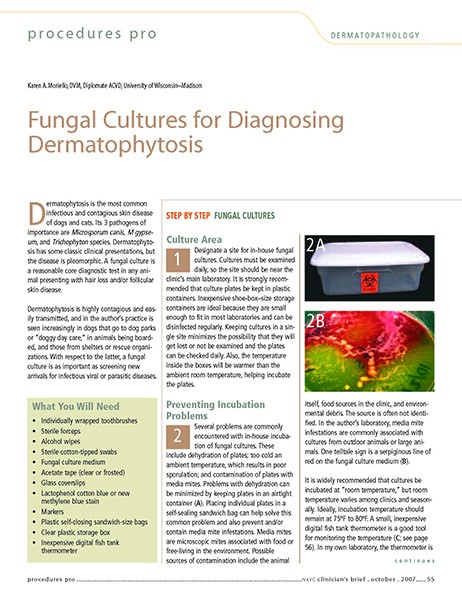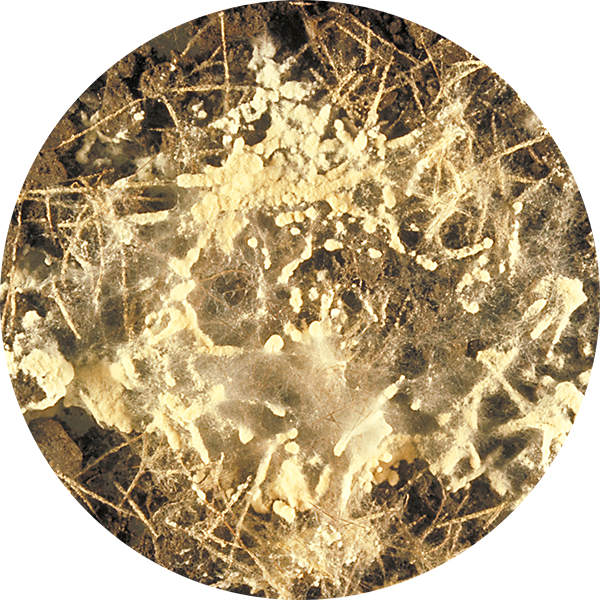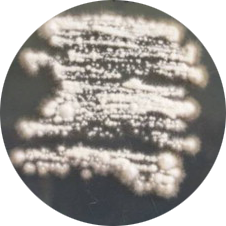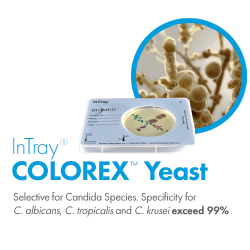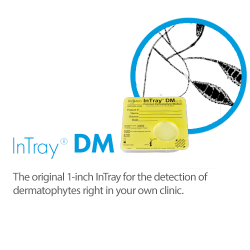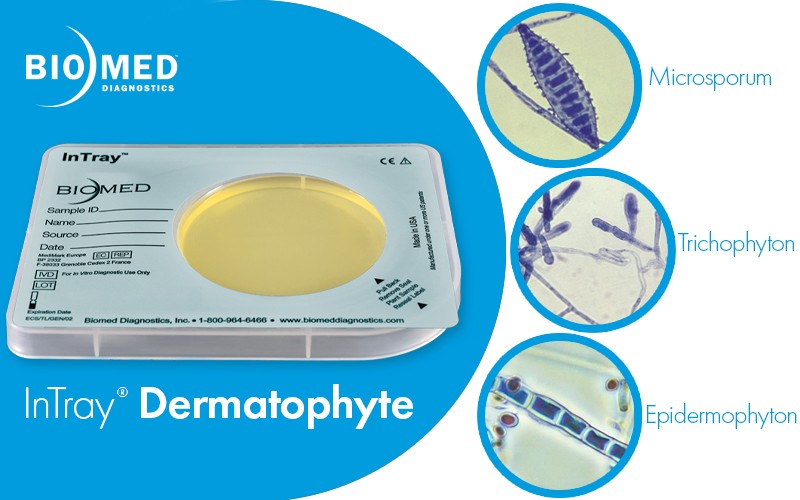
Fungal Cultures for Veterinary Diagnostics
Discover InTray® Dermatophyte!
Ready-to-use, affordable, rapid results that are easy to interpret — in your own office!
Accurate and Easy Identification
- Easy detection, right in your vet office. Point of care, ready-to-use diagnostic test
- 27 month shelf life
- Simple, rapid method for identifying several types of dermatophytes infections
- Red color in the presence of growing dermatophytes.
- Media enables distinctive colony growth presenting dermatophyte characteristics both macro and microscopically.
- Selective for dermatophytes, the media inhibits bacteria, yeast and saprophytic fungi.
- Results in less than 48 hours allows you to deliver appropriate and prompt treatment
Dermatophytes are fungi in the genera Microsporum, Tricophyton and Epidermophyton, capable of metabolizing keratin found in skin, hair and nails of living hosts. Though PCR is currently being investigated as means of diagnosis, culture diagnosis using selective media is considered the “Golden standard”! Colony morphology, media color change, and microscopic morphology are the best indicators to differentiate pathogens from contaminants.
Articles of Interest!
Fungal Cultures
A peer reviewed article by Selene A. Jones, DVM and Elizabeth R. May, DVM, DACVD
University of Tennessee
Fungal Cultures for Diagnosing Dermatophytosis
Karen A. Moriello, DVM, Diplomate ACVD
University of Wisconsin–Madison
Rapid presumptive positives
Dermatophytes are fungi in the genera Microsporum, Tricophyton and Epidermophyton. They are capable of metabolizing keratin found in skin, hair and nails of living hosts. The fungi characteristically may invade the cutaneous tissue of the living host but rarely penetrate the subcutaneous tissue. Tinea and ringworm are two terms commonly used to describe dermatophytes.
Fungal culture is the most accurate means of diagnosis. Biomed's InTray Dermatophyte media has a ‘presumptive’ dermatophyte positive color change indicator, phenol red. Dermatophyte fungi generally turn media from yellow to red as soon as the fungal colony can be seen with the naked eye.
InTray improves efficiency because the culture can be scanned directly for fungal hyphae that have distinguishing morphology (micro/macro conidia) that may be worth the effort of further work-up. For some species of fungi, diagnostic morphology can be distinguished from InTray 100x magnification alone. Biomed can provide photo validation.
InTray Dermatophyte is selective for:
Saprophytic Fungi or Bacteria?
A color change may occasionally be produced by a specimen heavily contaminated with saprophytic fungi or bacteria. However, differentiation from dermatophytes can be made as follows:
- DERMATOPHYTE: A color change appears in the medium with colony growth—colony pigments are usually light colored.
- SAPROPHYTE FUNGI: Colony growth is well established before any color change appears in the medium—colony pigments are usually dark colored.
- BACTERIA: The morphology of bacterial colonies differs from the morphology of fungal colonies.
Dermatophytes are fungi in the genera Microsporum, Tricophyton and Epidermophyton. They are capable of metabolizing keratin found in skin, hair and nails of living hosts. The fungi characteristically may invade the cutaneous tissue of the living host but rarely penetrate the subcutaneous tissue. Tinea and ringworm are two terms commonly used to describe dermatophytes
Validation Studies and Papers
-
Diagnostic microbiology in veterinary dermatology: Present and Future
Guardabassi_et_al-2017-Veterinary_Dermatology -
Medical Mycologists know that fungal culture is a critical to accurate diagnosis of fungal pathogens.
-
Preliminary results from the evaluation of a simple diagnostic procedure for the detection of dermatophytes in companion animals.
-
Comparative study of different microscopic techniques and culture media for the isolation of dermatophytes.


